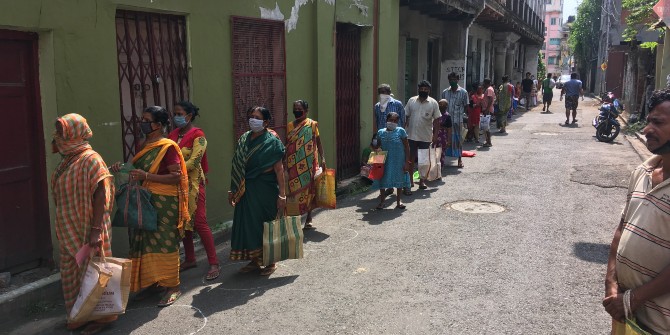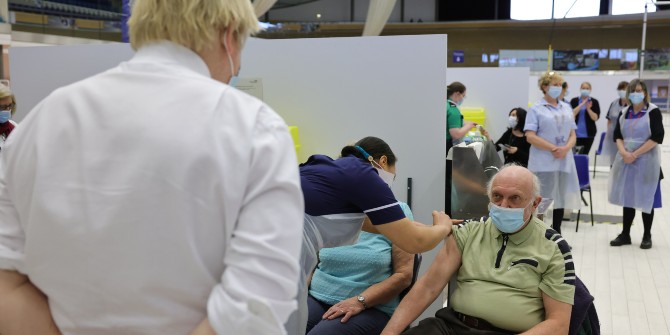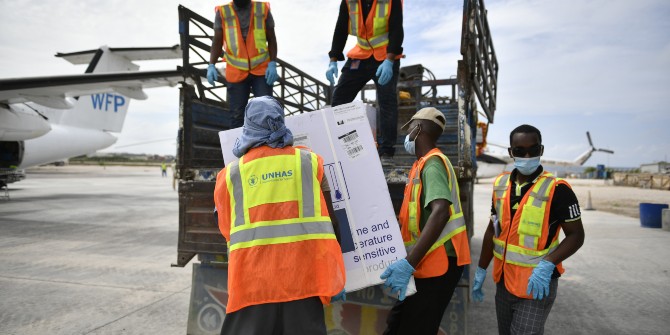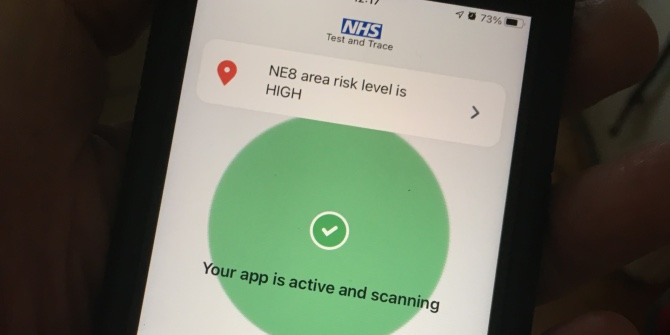Bereaved relatives have physically attacked health workers in India during the pandemic. Ishika Garg and Shayan Datta say that in the absence of sufficient laws to protect them, hospitals need to get better at identifying the signs of potential violence and respond quickly when it happens.
In June 2021, a shocking video emerged of a junior doctor in Assam being brutally beaten by the relatives of one of his patients, who had died of COVID-19. The incident led the Indian Medical Association (IMA), the country’s largest association of physicians and medical students, to call for a strong law to tackle healthcare violence. The Supreme Court of India recently acknowledged the relentless pressure on Indian healthcare workers during the COVID-19 pandemic: “It is absolutely necessary to take urgent steps for their well-being to ensure that our appreciation for their tremendous efforts is not reduced to rhetoric”.
In Maslow’s hierarchy of needs, safety and security are regarded as basic needs – just above food, rest and water. The World Medical Association insists that everyone has the right to work in a safe environment without the threat of violence. However, the reality in both public and private hospitals in India is very different. According to one study, more than 75% of Indian doctors have faced some form of violence, and more than 68% of incidents involve attacks by the relatives of the patients.
While the Protection of Medicare Service Persons and Medicare Service Institutions (Prevention of Violence and Damage to Property) Act has been adopted by about 23 states in the country, it has not been properly implemented. This is because the Act does not feature in the Indian Penal Code (IPC), which makes it difficult for victims to approach the police for help. Often the police are not even aware of the existence of this law. In fact, less than 10% of the cases registered under this Act end up reaching the courts after the initial charge sheet is filed. The police need to be made more aware not only of the existence of this Act, but also the correct procedure for pursuing cases. Confusingly, the law also varies across different states.
The Epidemic Diseases Act, 1897 was amended recently to include penalties for any violence against healthcare workers. But this is a sunset clause which will only last for the duration of the pandemic. So the IMA has strengthened its call for national legislation to deal with this issue. The association wants it to be enacted through a section in the IPC. Specific offences delineated in the IPC deal with violence against public servants, which might grant protection to employees of public hospitals. However, the same does not hold true for healthcare staff in private hospitals. For them, only the provisions penalising simple assault and hurt can apply, and these attract significantly less stringent penalties than those that a national law specifically targeting this issue would apply.

The IMA believes that a targeted law would deter violence against healthcare professionals, protecting their right to life under Article 21 of the Constitution. The theory of deterrence in criminal justice functions on the assumption that the accused make rational choices, and would therefore not resort to criminal conduct due to the fear of punishment. Deterrence is more likely to work for premeditated offences, and not the result of sudden emotions. Yet violence against healthcare workers is generally committed by patients’ relatives and is the result of the shock and anguish of losing a loved one. Several factors can be at play: poor infrastructure, skewed doctor-patient ratios, and a lack of communication. Studies have shown that policies aimed at better enforcement and with faster consequences are more likely to deter criminality. Unless structural factors such as the underlying reasons behind such violence and enforcement of the offences by the police are addressed, the law would be unlikely to deter angry, vengeful individuals.
In the absence of a new law, a few steps can be taken to reduce attacks on health workers. Firstly, all healthcare professionals should be familiarised with the STAMP acronym, which provides an easy way to recognise initial indications of potential violence. This will give them an opportunity to defuse the situation before it escalates. STAMP stands for:
Staring, an early indicator of possible violence.
Tone and volume of voice: raised voices and screaming have frequently been associated with episodes of violence.
Anxiety, which can result from the crippling experience of losing a family member.
Mumbling is a common cue for violence, as it suggests mounting frustration.
Pacing by relatives has been observed in instances of violence and is seen as a result of mounting agitation.
Most hospitals do not have a standard protocol for tackling violence. A protocol like Code Purple would alert healthcare staff to incidents of potential violence. This could include measures such as announcing the exact location of violence on the hospital’s public address system to make sure that the security staff can respond and assist the victim immediately. India should also implement the WHO Guidelines, which require hospitals to provide adequate mechanisms for reporting incidents of violence against healthcare staff.
As the Bombay High Court recently said: “We must protect the medical fraternity and we will be failing in our duties as a state if we don’t”. New laws alone will not suffice if structural changes are not implemented. We owe a great deal to medical staff for their invaluable contribution in these difficult times. They have saved our lives; we must now save theirs.
This post represents the views of the author and not those of the COVID-19 blog, nor LSE.






A painful truth penned wonderfully. Hope this draws attention for amending laws and giving protection to the doctors… the warriors of today